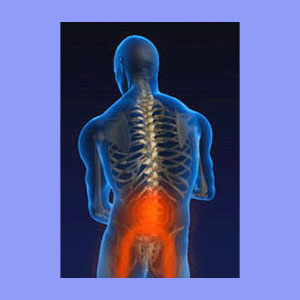
Poor posture sciatica is a condition theorized to exist due an overly straight or overly slouched positioning of the body when standing or sitting. It is a well known fact that bad posture can cause pain, but in many diagnosed cases, there is truly nothing seriously wrong with posture demonstrated. In these circumstances, while the person may stand a bit too straight or too slouched, their posture is considered normal and is unfortunately taking the blame unfairly for symptoms it is not creating.
Many complementary therapists, in particular, place inordinate emphasis on posture as the leading cause of sciatic nerve pain. While having good posture is an asset, it is not at all a guarantee that you will never have back and leg pain. I know this for a fact, since my posture was always very good, yet I suffered for decades.
This essay will detail the theory of the postural enactment of sciatica, as well as provide some lesser known facts about the relationship between overly straight or overly slouched posture and the incidence of chronic pain.
Poor Posture Sciatica Concerns
Therapists who spend inordinate amounts of time addressing postural issues typically are missing the boat when it comes to the cause of many painful conditions. This is because it is documented that the human anatomy is incredibly flexible in what is considered normal in terms of posture.
If there is indeed a spinal structural cause for the pain, such as a herniated disc, then improving posture is not going to do a bit of good to resolve the symptoms. You will look better standing up straight while you suffer from that disc pain, but you will suffer nonetheless.
Of course, posture correction will also do nothing at all to address one of the most common forms of sciatica, which is mindbody ischemia. Standing up straight or sitting properly will not get the blood flowing to anatomical regions which are suffering from oxygen deprivation.
Posture correction therapy may be mildly to moderately useful in instances where there is actually some soft-tissue condition to blame for the sciatic nerve expression, such as a muscle imbalance, or other anatomical deficit, such as short leg syndrome.
Posture therapy is also helpful for patients with many other dorsalgia problems, such as hyperlordosis or hyperkyphosis.
Of course, it goes without saying that in the rare case of truly terrible posture, therapy will be effective and should be performed to break the patient of postural habits objectively deemed to be damaging.
Anatomical Positioning Sciatica Conditions
Poor posture is characterized by many possible causative and contributory criteria. Some of the most common physical characteristics of bad posture include:
Sticking the neck out
Hunching the middle back
Slouching when seated
Tucking the buttocks in
Holding one shoulder lower than the other
Putting uneven weight on one leg or the other
Allowing the chest to sink and the stomach to protrude
These are not attractive or healthy anatomical behaviors, yet they are very common, especially in younger people. It is best to develop good posture, since it will help to create a sense of health and aesthetic beauty to the human form, yet improving one’s posture is unlikely to be a cure for most chronic pain syndromes.
Poor Posture Sciatica Assistance
Working on improving the posture is a worthwhile addition to a complete health maintenance program, but it is not a cure-all for pain, as many therapists theorize. I know of countless poor souls who spent vast quantities of time doing ridiculous exercises and stretches which accomplished nothing except to increase the frustration these people already endured from their chronic pain. In order to be free from pain, a person must identify the real symptomatic source and posture typically is not the villain. The bottom line comes down to this:
Yes, fix your bad posture habits, since this will help to make your body stronger and allow your muscles to work more efficiently.
No, do not believe that correcting your posture will provide an instant cure to any musculoskeletal issue.
Yes, realize that bad posture can fatigue the soft tissues and even reshape the skeleton over many years.
No, do not believe that extreme chronic sciatica is the result of bad posture for the overwhelming majority of diagnosed individuals.
Good posture is a part of a combined care approach to back pain, but rarely a solution unto itself.
To learn more about postural therapy or correction, consult with a physical therapist or consider an alternate approach using Alexander Technique.





